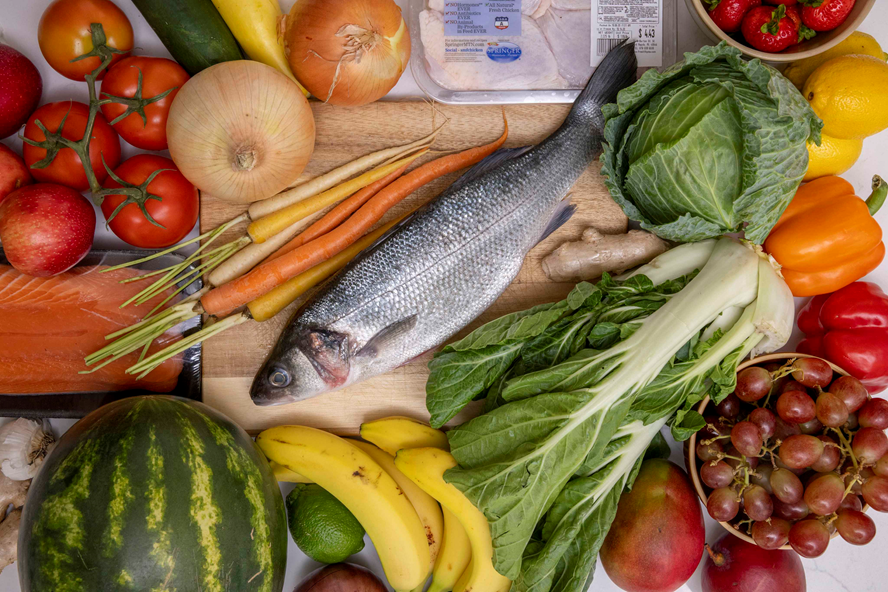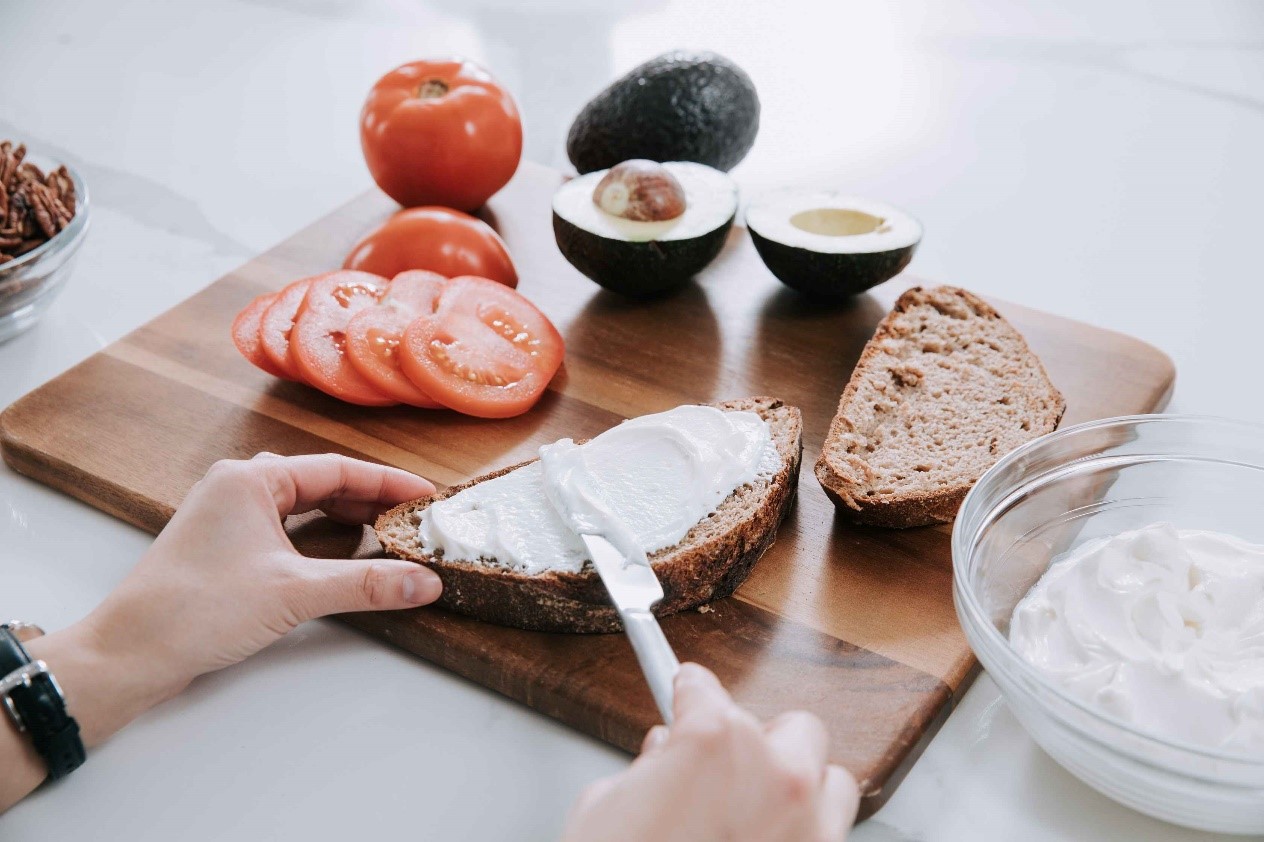Nutrition starts with what you put on your plate. Paying attention to what you eat can help improve your general well-being and help you build stronger immunity. Check out this article for tips on how to make healthier food choices.
Watch What You Eat

A balanced diet entails eating the right amount of go, grow, and glow food in your daily meals. The Food and Nutrition Research Institute (FNRI) has come up with Pinggang Pinoy, a food plate model designed to help Filipinos fulfill their dietary needs. This food guide shows suggested proportions of the 3 food groups. It considers the varying needs of different age groups and also includes a separate guide for expectant mothers and breastfeeding women.
Go foods consist mainly of carbohydrates, which give us the energy to complete our tasks. Examples of go food include root crops, like gabi and camote, and grains, like rice and corn. On the other hand, grow foods are high in protein, which helps develop strong bones and muscles. Lean meat, fish, eggs, milk, and beans are a part of this food group.
Lastly, glow foods are packed with phytonutrients, which boost brain health and help regulate overall bodily functions. We get phytonutrients, like lycopene and antioxidants, from plant-based food. To ensure that you get a wide variety of these goodies, eat a rainbow of fruits and veggies such as okra, banana, grapes, and squash.
Consider Taking Supplements

Munching on a healthy amount of fruits and vegetables every day can help you meet your nutritional needs. But what if you are on a restrictive diet or have limited access to whole food? In cases like this, a dietary supplement can help you fill the gaps in your diet. Try the next generation of Nutrilite™ Double X™, a patented blend of botanical extracts from turmeric, rosemary, and sophora japonica, which together, enables the body to fight free radicals.
To ensure that you get your hands on the best multivitamin, the crops are harvested while their phytonutrient content is at its most powerful. For instance, rosemary is handpicked during the summer and is sun-dried for 3 days - a practice that preserves most of its nutrients. Turmeric is plucked when its leaves become brown. This maximizes the antioxidant properties of curcumin, an active ingredient of this plant. Lastly, sophora japonica is harvested before the buds bloom into flowers.
Since you'll have to take the next generation of Nutrilite™ Double X™ every day, the Amway Subscription Plan will make it easier for you to buy it regularly. You can adjust the quantity, pick the delivery date, and choose between a 31 or 62-day supply of this supplement. With this plan, you can have freebies and enjoy discounts. You can also check the auto continue box to automatically renew your subscription once the current one ends. Interested? Click here to subscribe.
Take Care of the Tummy

Increasing your consumption of fiber-rich food improves gut health. Good sources of fiber include brown rice, whole wheat bread, tomatoes, carrots, and potatoes. Fiber helps food move along the digestive system, which promotes regular bowel movement and lowers your risk of being constipated.
Eating more fiber can also help you shed some pounds. High-fiber food takes longer to break down, so eating them feels more satisfying and delays feelings of hunger. Plus, they contain fewer calories for the same volume when compared to low-fiber food.
Probiotics also play an important role in digestive health. These are a collection of good live bacteria and yeast that are normally found in the body, especially in the mouth, urinary tract, and digestive system. Maintaining the natural balance of these microorganisms is essential for proper digestion and flawless optimal nutrient absorption.
Having a normal level of beneficial bacteria can also help prevent constipation and diarrhea. Help preserve this balance by adding probiotic-rich food into your diet. Fermented food is an excellent source of probiotics. Examples include miso paste and soup, kimchi, cottage cheese, yogurt, and sour cream.
Stay Hydrated

Water is important for maintaining overall bodily functions. It helps cleanse the body by expelling waste through sweating and urination. It's also good for keeping the joints lubricated and regulating normal body temperature. It also increases metabolism.
The amount of water you should take daily depends on your lifestyle and environment. The general guideline is to drink around 3.7 liters of fluids per day for men and to consume around 2.7 liters per day for women. This estimate includes fluid intake from food and other beverages. You may also use urine color to help you determine if you're getting enough fluids. Go for a pale yellow pee.
You have to increase your intake if you have a fever or experiencing diarrhea. You also need to drink more during warm weather and while you're outdoors or exercising. Those who are pregnant or lactating need plenty of fluids as well.
Not a fan of plain water, or just want to try something new? Adding a few citrus fruit slices to the glass may encourage you to drink more frequently.
Say Yes to Healthy Fats

The human brain is composed of up to 70% fat, so you need a generous dose of good fats to keep the brain up and running. Unsaturated fat is good for you. It helps you feel full for much longer, which lessens the need for too many snacks. Unsaturated fat can lower your risk of developing heart disease as well.
This type of fat can be found in avocado, plant-based cooking oils (olive, sesame, vegetable, etc.), egg, and peanut butter. Omega-3 fatty acids, a basic component of the brain, also belong to this category. You can get it from fatty fish, like salmon and sardines, walnuts, and chia seeds. It's especially important for pregnant women and young children because it aids brain development.
From keeping the 3 food groups in mind to getting enough good fats, these tips can help you achieve your health goals. Your journey to a healthier lifestyle begins with making some adjustments to your diet. Starting small can eventually help you consistently make smart food choices.
